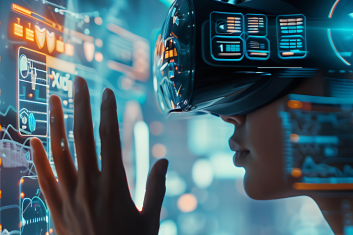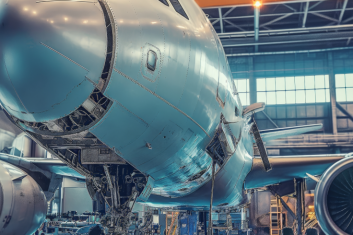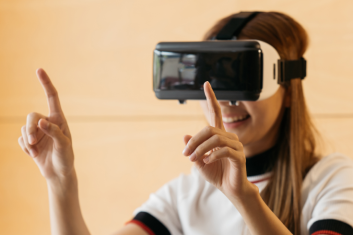How AR/VR works for safety training
Virtual and Augmented Reality are two different types of technology that can be combined to create a new immersive training experience. By using VR in safety training, you can simulate dangerous situations and experiences while also immersing trainees in the scenarios, so they feel more connected to the action.
Statistically, the consumer Virtual Reality market reached US $2,6 billion two years ago. And this market is set to grow exponentially. According to a report by Statista, the global AR, VR, and MR market is expected to reach $250 billion by 2028. The expanding popularity of this digital trend is obvious.
Ready to learn more about how you can use and perhaps combine these technologies in your safety training programs? Keep reading to find out more about the key benefits of these kinds of solutions as compared to traditional training.
How Do Virtual Reality and Augmented Reality Work in Safety Training?
Let’s begin with the basics and the main goals of both technologies. The world doesn’t stand still; new concepts are constantly hitting the market. Therefore, to stay competitive in the market and improve business performance, you need to keep up with the latest trends and understand how you can implement AR and VR for your operations.
Let’s begin with the role of Virtual and Augmented Reality in training.
Virtual Reality
Virtual Reality can be used in a variety of training scenarios where 3D immersion is required. Its main objective is to provide employees with the opportunity to get effective on-the-job training in a safe virtual environment.
One of the most common uses of VR safety training is to simulate dangerous situations to help trainees learn to respond appropriately.
For example, you can use VR to teach how to administer first aid when a coworker is hurt, how to deal with fire in the warehouse, what to do in case of a leak of hazardous chemicals, etc. VR can be used in emergency-situations training, fall-protection training, fire-safety training, and so on.
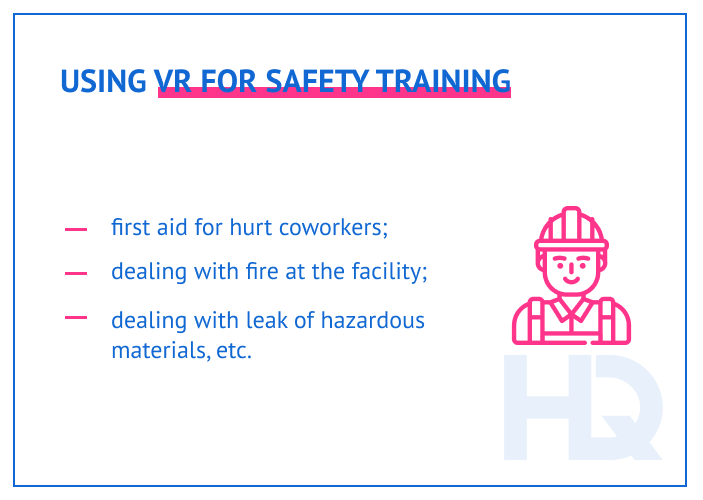
VR technology offers numerous benefits for companies that depend on comprehensive health and safety training.
If your company deals with heavy machinery and equipment, uses vehicles for the transportation of goods, or works with hazardous materials, then VR could be a perfect solution to make such training safer, more realistic, and more engaging.
It allows you to recreate every detail of a given situation, so employees don’t just learn about how to perform a certain task, they also learn how to perform it safely, how to identify potential dangers, and how to respond in an emergency.
Augmented Reality
Augmented Reality is a combination of the physical and digital worlds. Like Virtual Reality, it is widely used to prepare employees for dangerous situations in real life. However, unlike Virtual Reality solutions, AR training solutions are much easier to deploy, as they most often require only a conventional user device, such as a smartphone or tablet.
Through these devices, trainees can view computer-generated imagery of possible risks they may face. They also learn the main actions that might be taken to mitigate these risks.
In general, the entry threshold for Augmented Reality solutions is slightly lower than those based on Virtual Reality because the trainees are using devices they’re accustomed to in their daily lives.
We’ve just covered the basics, so let’s move on to the fundamental advantages of both technologies for safety training.
Interested in AR/VR for safety training? Let’s discuss it!HQSoftware has a team of skilled professionals ready to tackle the project. Let’s talk!
Anna Halias
Business Development Manager,
HQSoftware
Business Value of VR and AR for Safety Training
VR can put trainees in situations they might face on any workday and teach them to think and respond correctly in various situations, from daily tasks to critical emergencies. It allows employees to be doubly sure they will be able to do these tasks safely, avoiding risks to their health or safety.
Let’s take a closer look at the key benefits of AR and VR safety training.
Benefits of VR for Safety Training
Safety and health are issues of utmost concern for many companies. And this is where virtual safety training is best employed, as it can easily prepare workers for a variety of possible challenges in an effective way.
Here’s a list of the key advantages of Virtual Reality for safety training:
- More efficient information processing. It can help the worker understand a particular situation better and learn to respond more quickly. VR is used to simulate a variety of extreme environments and dangerous situations, such as a natural disaster or car crash, so your employees can learn how to respond.
- Speed up response to hazards and errors. For example, if you want to teach your employees to identify a potential hazard, such as a chemical explosion or a malfunctioning machine, you can use VR to show them how to deal with it in real life.
- Additional communication within the team. It can help workers experience teamwork and communication in new ways. You can use VR to let employees experience team training or simulations where they’re working with remote teams.
- Improved retention. In VR training, you can use engaging methods that go beyond traditional learning, such as various kinds of interactive elements, gamification, an achievements system, and so on. Even constantly repeating scenarios won’t be so tedious for students in a VR environment.
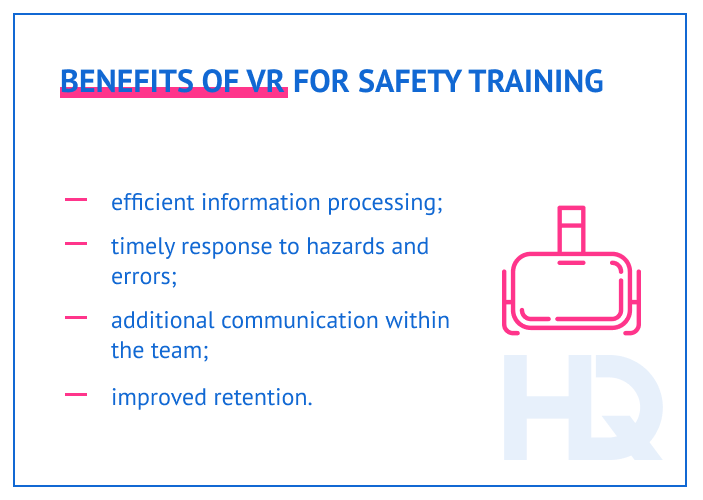
Benefits of Augmented Reality for safety training
Augmented Reality is bringing immersive technology to the safety training field in a big way.
Augmented Reality can be used to simulate hazardous workplace situations such as a chemical spill or fire. Letting your employees see what it’s like on the ground before entering a hazardous zone makes them more likely to respond appropriately.
The benefits of Augmented Reality for safety training are numerous. Let’s take a deeper look:
- Simpler implementation. AR can be used by any organization without the need for specialized equipment. Compared to Virtual Reality, Augmented Reality training sessions most often require only a smartphone and a mobile app.
- Versatility. AR can be used to train staff at all levels of an organization, from field workers to managers who are rarely present in the production area. Although they may have completely different tasks to do during the training, AR training sessions will meet them all. For example, the manager will most likely need to exercise soft skills to organize subordinates in a critical situation and evacuate them without panic or chaos. And workers will need applied knowledge: what to do if clothes catch fire, or a colleague was crushed by a machine tool, or the machine sparks.
- Ability to simulate emergency situations, to mitigate stress when there is a real incident. Employees learn how to behave in a stressful situation, how to handle situations where they feel threatened, and how to deal with this stress in a healthy way.
- Lower training costs. Statistically, the average cost of training per employee was reduced to $175 by using AR, thanks to online and remote training.
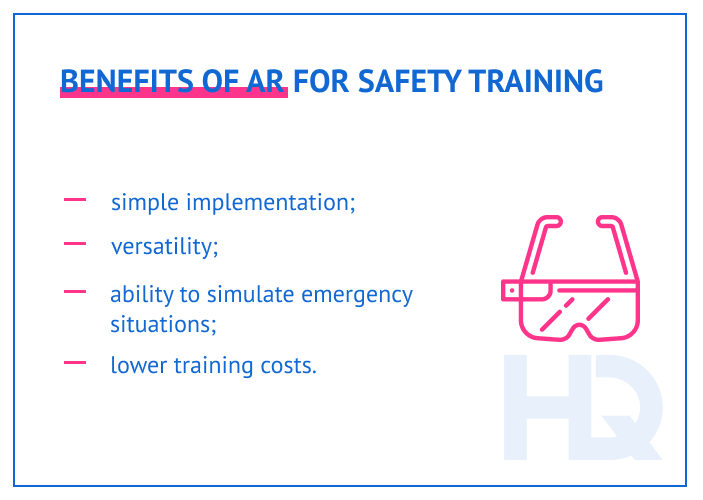
With these benefits in mind, it is clear why Augmented Reality is becoming increasingly popular as a training tool. Providing realistic simulation of real-world scenarios allows trainees to practice how to respond when they face similar situations in the real world.
How do modern businesses use AR to increase their revenues and outperform their industry competitors?

As a result, they are more likely to be comfortable and confident when confronted with these scenarios on the job. So, let’s take a look at what industries are using AR/VR training today.
In What Areas Can AR/VR Training Be Used?
Let’s take a deeper look at the main fields where these technologies are useful in employee safety training.
Construction
Construction sites are vulnerable to accidents ranging from falling objects to vehicle incidents to exposure to toxic fumes and potentially dangerous equipment. Many of these risks can be mitigated by providing employees with safety training.
Thanks to VR training, employees can learn how to use the new equipment correctly in a safe environment. Inexperienced employees can damage equipment if they don’t know how to use it properly, as well as injure themselves. Safety training sessions can prevent this from happening.
Oil and gas industry
AR safety training can be used to train employees who deal with checking gas meters and dealing with harmful substances leaking into the air or water, industrial fires, etc.
AR/VR training sessions allow workers to come up with an action plan for how to respond in these situations and minimize personal risks.
Food and beverage industry
With growing concerns about food safety and quality, employers need to train subordinates from an early stage on food handling and production practices. This can be done through AR/VR training programs, which bring employees into a virtual environment that duplicates the real-world one where they will be working.
Using AR/VR technology, employees can hone their skills for dealing with emergencies at a food processing plant or distillery before they encounter something similar in real life.
Logistics
In this area, AR/VR safety training is typically used for driver simulation training. You know that it can be hard to predict what may happen on the road.
This is where VR training sessions help employees learn how to respond during natural disasters, bad weather, or difficult driving situations, such as serpentine driving, accidents and emergencies, etc.
Companies that offer logistics services or specialize in manufacturing and have their own large warehouses typically have a variety of forklifts and other equipment traveling around the warehouse. They must drive carefully, not endanger pedestrians, carefully load goods, and so on. AR/VR training sessions can help drivers acquire these skills.
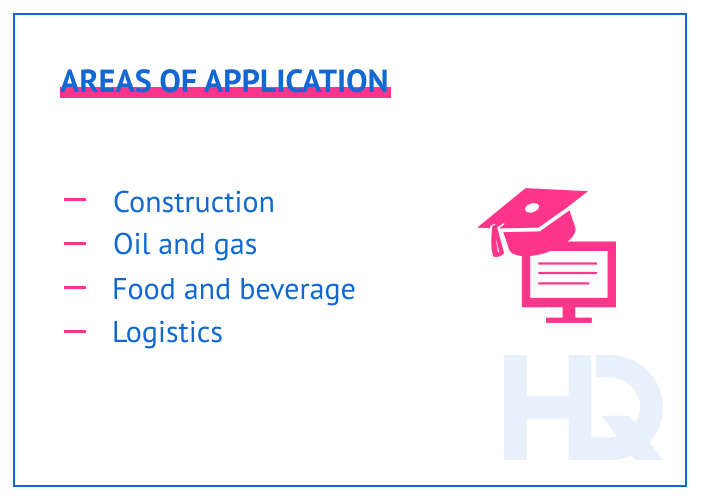
Of course, both technologies have a lot of benefits and are useful not only in the listed industries. However, there are also some risks to be aware of.
Risks and Considerations
Considering all the benefits of Virtual Reality and Augmented Reality safety training, it bears mentioning that these powerful technologies have some disadvantages. And you can’t implement them until you are apprised of the main risks and considerations:
- AR/VR training can be costly to implement and maintain. You need specialized equipment, as well as trainers to guide new workers. This is costly and time-consuming when you have a large organization. In addition, with a considerable employee base, you have to ensure that everyone receives the training. This can be a challenge if your employees are distributed across different locations.
- One of the main risks associated with AR/VR safety training is the possibility of simulator sickness. It occurs when a user is exposed to a high-intensity virtual environment and experiences symptoms like nausea, dizziness, and headaches. Moreover, long-time use of head-mounted displays can cause problems such as poor depth perception, eye discomfort, motion sickness, or fatigue.
- One of the biggest problems workers face when using AR/VR solutions is that they can forget they’re wearing the gear. This can be especially true if they are working in an unfamiliar environment, such as a corporate conference room or an entertainment venue.
- The hardware and software may need occasional technical upgrades and updates. The solution to this problem is to partner with experts in this area that will be responsible for solution implementation and enhancement.
And now, let’s review some stories of companies that have successfully implemented this technology.
Success Cases
The main goal of VR is to keep workers safe. Statistically, the global VR, AR, and MR market reached $28 billion in 2021. Today, VR is widely used to train employees at such legendary companies as Chevron and Walmart. Do you want more examples? Read about them below.
VR simulations for occupational training by HQSoftware
One of the most successful case studies where VR and AR training have made a big difference is one involving VR simulations for occupational training. Thanks to its collaboration with HQSoftware, the client built a software solution for VR training with a variety of simulations.
The key objective was to create training simulations in areas such as mechanics, engineering, and cooking. One of the biggest challenges was to develop properly-constructed simulations in such different fields. However, the client got a fantastic simulation solution that offers two learning modes: hands-on practice and an animated tutorial.
VR training for teaching UPS student drivers
Another successful case study is from the UPS company, which decided to use VR training sessions to teach student drivers to identify and avoid road hazards. VR headsets can simulate the experience of driving on city streets.
The company has driver-training centers that feature the latest and best possible technology. Thanks to VR training, students get a chance to learn in a realistic training environment without actual risk to themselves or their vehicles.
VR training sessions by Tyson Foods
Tyson Foods also uses VR training sessions, and the company has consequently reduced illnesses and injuries by 20%, while saving millions of dollars.
What about the development stage? Keep reading to learn more about how these training platforms are developed.
Development Specifics
This may be one of the most interesting sections of this post. What experts are needed to build an AR/VR app? What tech stack is required?
The team can include a variety of specialists:
- Business Analyst, to create a product specifications list;
- Project Manager, to break the project down into subtasks, delegate them to subordinates, and monitor the workflow;
- UX/UI Designer, to build the user interface;
- Developers, to write the program code;
- QA testers, to check if the solution meets the requirements from a product specifications list.
As for the tech stack, the selected technologies can influence the app’s maintainability, salability, costs, and, of course, development time. If your goal is to build a successful app, you need to be very attentive when choosing a tech stack. Here’s a list of the most advanced frameworks and SDKs (software development kits) required for building VR and AR training apps:
- Unity, compatible with 25+ software platforms;
- Unreal Engine, a real-time 3D creation tool for photoreal solutions;
- Vuforia, an AR development kit for Android, iOS, and UWP;
- Oculus, a set of tools for building realistic VR solutions;
- Catchoom, a set of image recognition and augmented reality tools;
- Wikitude, a kit for powerful augmented reality apps;
- Kudan, an all-in-one AR SDK;
- EasyAR, a standalone AR SDK;
- iOS/Android SDK, SDKs for building native apps;
- ARKit, a top-notch SDK for the iOS platform;
- ARCore, a proprietary Google AR SDK;
- 8th Wall, a web AR development platform; and
- AR.js, a lightweight AR library.
How Much Does It Cost to Build an AR/VR Safety Training App?
Another important factor to consider is the average cost of your future training platform.
AR/VR safety training apps can be expensive to build and maintain, but they can also be a powerful tool for engaging your workforce. They can also serve as an effective way to monitor and track employee behavior and performance.
That said, it’s essential to keep in mind that there is no one-size-fits-all approach to delivering AR/VR safety training. You should tailor your AR/VR safety training app to meet your needs.
Here are just some of the factors that can influence the costs:
- Gathering visual assets of the training location (photo, video);
- Buying all required software licenses;
- Investing in hardware (servers, computers, etc.);
- Salaries of programmers, designers, and other professionals working on this project.
The most expensive part is hiring programmers: sometimes, this can cost $10,000 or more. Therefore, it’s often better to hire a professional outsourced software development company, as this ensures you are dealing with experts in this field and won’t have to invest in an in-house team.
Bottom Line
AR/VR training has many benefits, but it also has risks. Before investing in AR/VR training for your organization, review the main pros and cons to make sure this type of training is right for your business. AR/VR training can help your business improve your employees’ ability to work in cases of emergency and handle critical situations better.
Moreover, AR/VR safety training can help your employees learn to think critically during a crisis situation and make better decisions during an emergency by helping them practice these situations in a safe environment.
Regardless of your industry, at HQSoftware, you will undoubtedly find a team of professionals that will help bring your ideas to life. We have many years of field experience, so you can rely on us if your goal is to build a powerful AR/VR training solution.
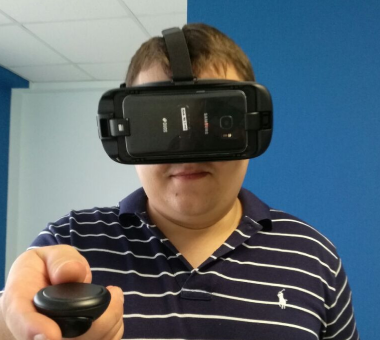
AR/VR Expert
A developer with extensive expertise in AR/VR, very ingrained into the topic of Mixed Reality development. Shares his knowledge and the results of many years of work.
Get Your VR Prototype For Free
Visit PageRelated Posts
View AllFrequently Asked Questions
How to implement AR/VR training
How to build an AR/VR training solution
How much does AR/VR training cost?
We are open to seeing your business needs and determining the best solution. Complete this form, and receive a free personalized proposal from your dedicated manager.

Sergei Vardomatski
Founder




